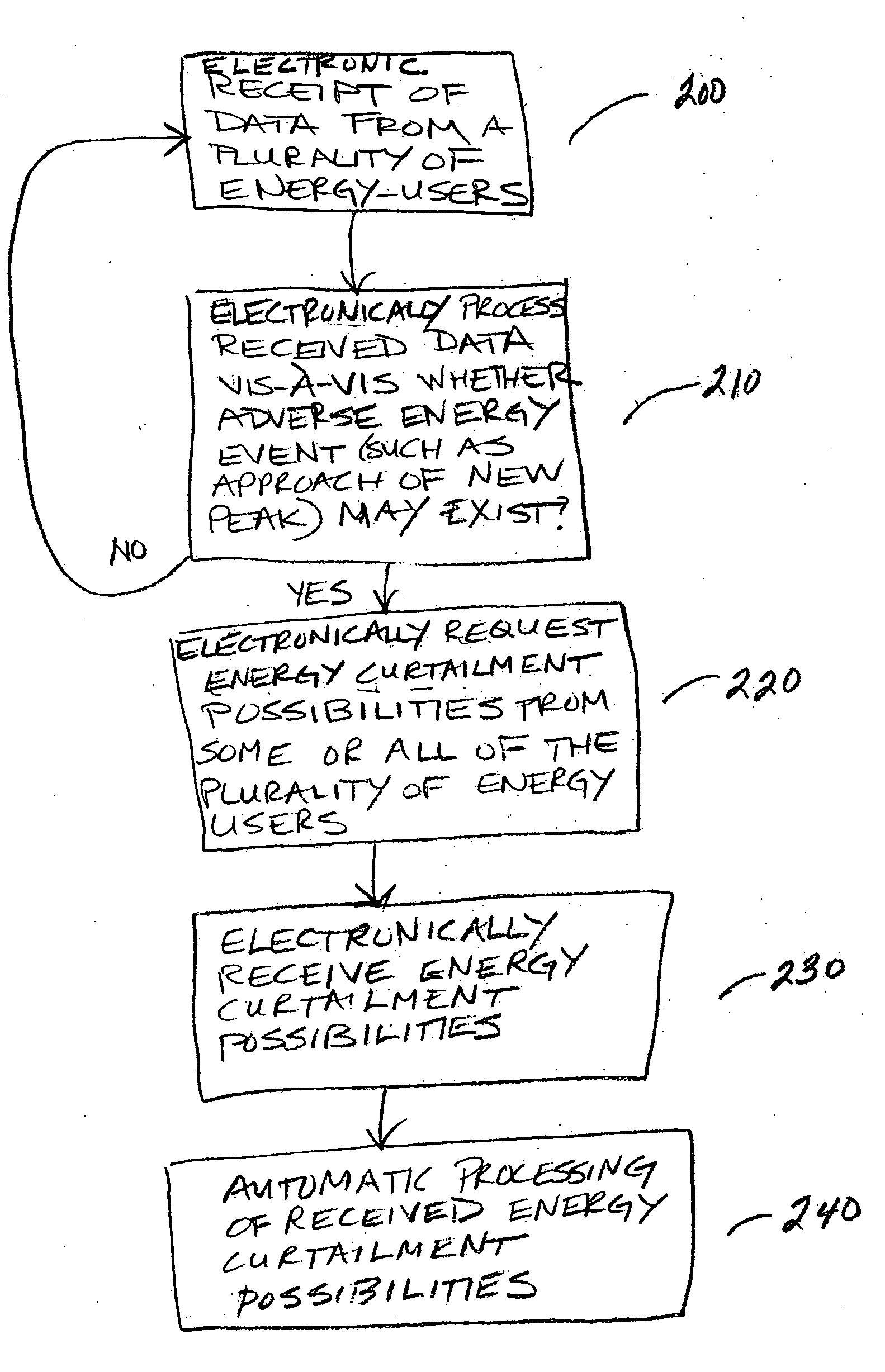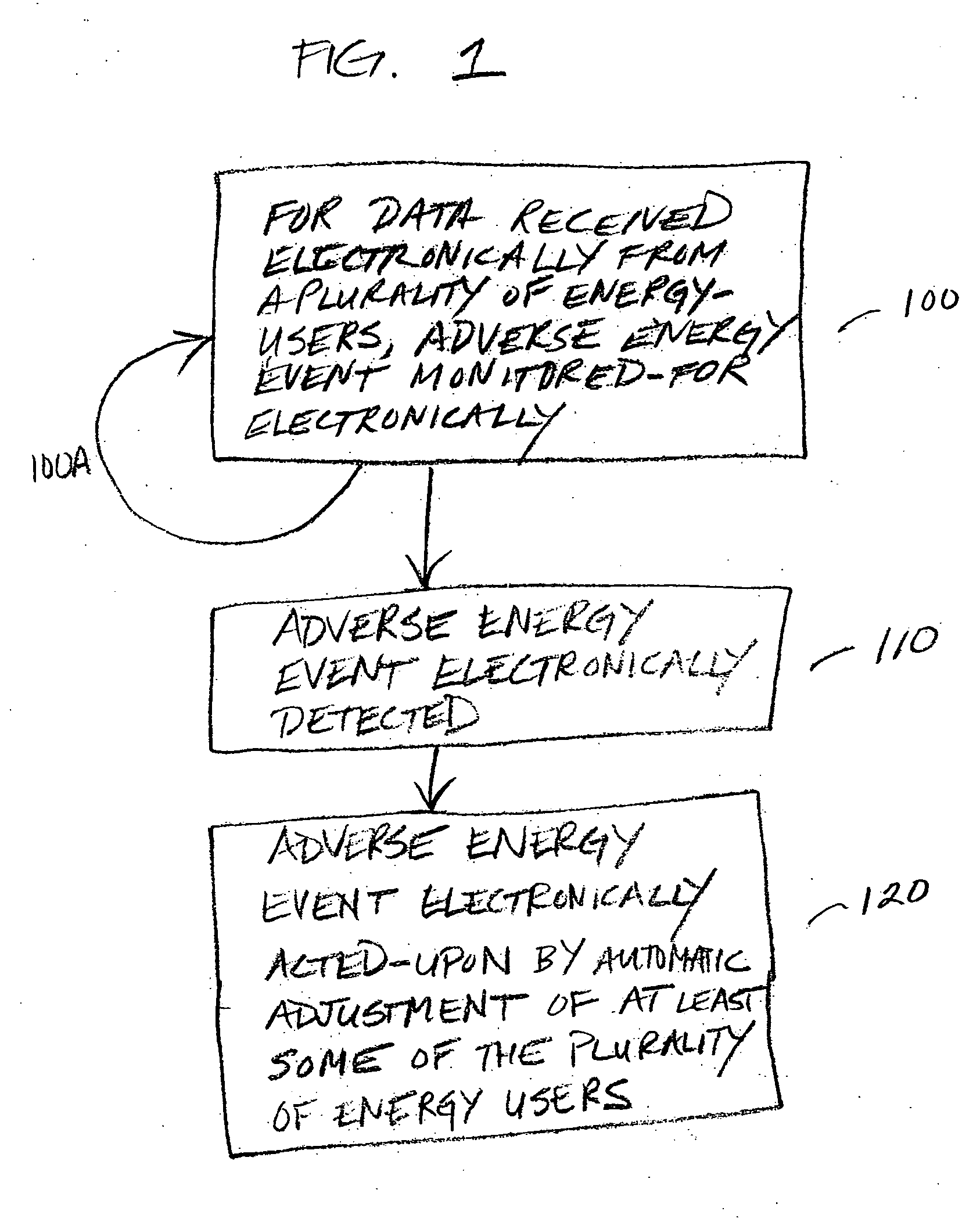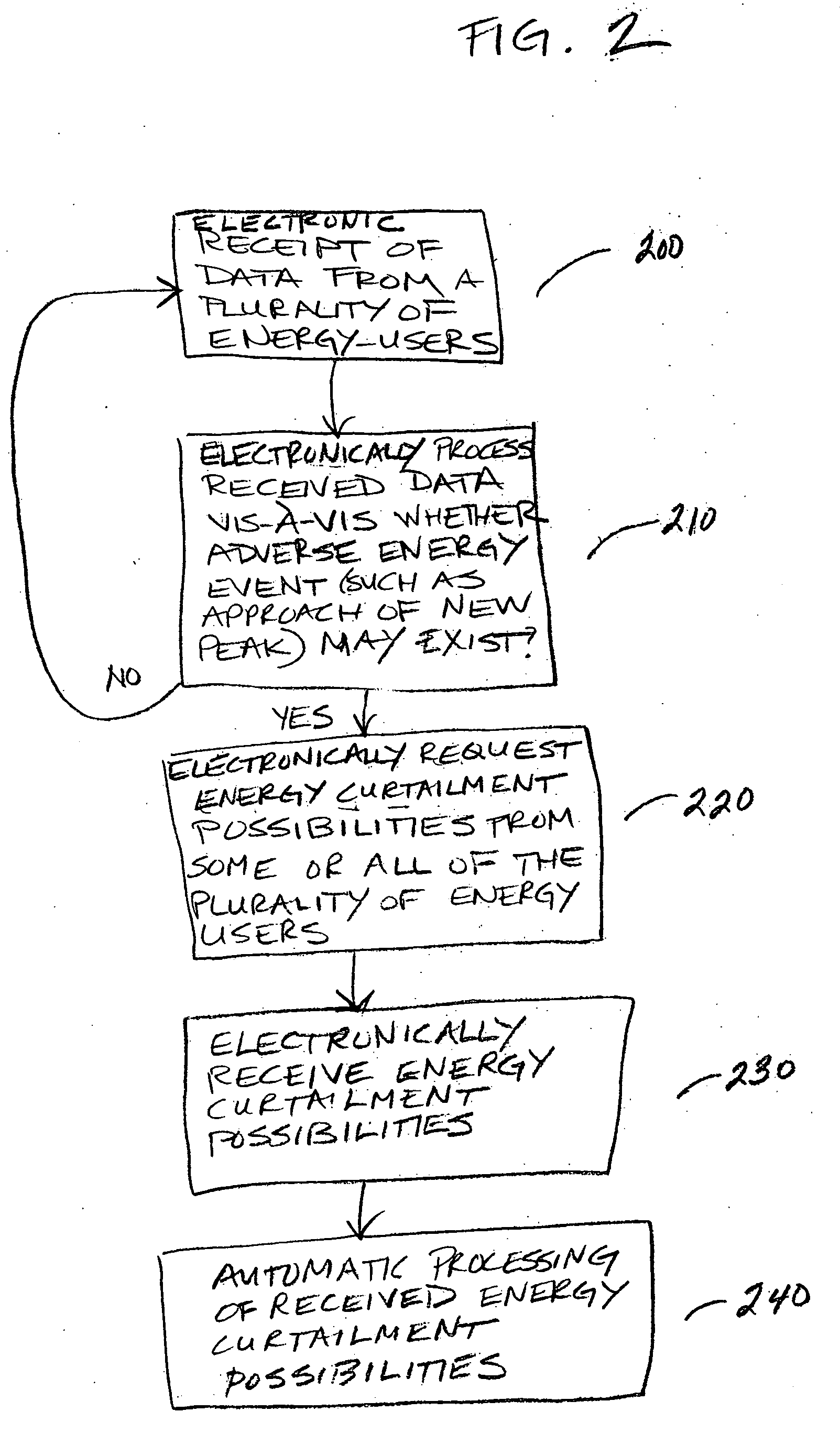Automatic energy management and energy consumption reduction, especially in commercial and multi-building systems
a technology of automatic energy management and energy consumption reduction, applied in the direction of load forecasting in the ac network, process and machine control, instruments, etc., can solve the problems of lack of capital investment in new transmission capacity, shortage of generating capacity, and electric energy crisis, so as to reduce the need for human operator attention, minimize the impact, and provide maximum energy curtailment
- Summary
- Abstract
- Description
- Claims
- Application Information
AI Technical Summary
Benefits of technology
Problems solved by technology
Method used
Image
Examples
example 1
[0130] Initial deployment of energy load reduction according to the invention is accomplished by a fixed rotation schedule of equipment that is stepped through in a serial fashion. System attributes, such as allowable curtailment duration and electrical demand, is determined through functional testing and pre-programmed in a fixed matrix. A rotation script is then deployed to systematically cycle each piece (or group) of equipment off and on at a fixed duration. This ‘round robin’ rotation approach offers a less-than-fully-optimized rotation cycle but the system responses obtained from this method is used for training of the programmable intelligent agent (PIA) for optimal load rotation.
[0131] Ultimately, a programmable intelligent agent optimizes the load rotation of curtailable loads, using a combination of intelligent agents which operate the device level, portfolio level, and pool level as follows: [0132] 1) Device Level Programmable Intelligent Agent—utilizes a forward artific...
example 2
[0182] An example of Peak Load: Virtual Meter according to the invention versus Real Meters is shown in FIG. 8. In this hypothetical example, the combined total energy usage recorded by four meters A, B, C and D was 95 kW. However, Meter A reached its peak at 4:00 p.m. on the third day of the month, Meter B's peak occurred at 10:00 a.m. on the 12th, Meter C recorded its highest usage at noon on the 16th and Meter D recorded its peak at 6:00 p.m. on the 29th. Despite the fact that none of these peaks occurred at the same time, or even on the same day, the customer was charged for the combined total of the four.
[0183] With a virtual meter, however, there is only one recorded peak—the single point in time during the month when the customer's total aggregate usage was highest. In this example, that peak was only 80 kW, and could have occurred at any time during the billing cycle. This functionality can provide the customer the ability to negotiate with its energy supplier for a differe...
example 3
[0184] In this Example, there is provided an energy management system according to the invention in which are used five integrated products or features: [0185] 1) Permanent Load Reduction-software intelligent agents that continually make and implement complex multi-input, device-setting decisions, and permanently reduce the amount of energy consumed by a customer. [0186] 2) Peak Load Avoidance-The use of a neural network to forecast, identify and minimize peak load events, reducing the portion of a customer's energy bill related to its peak energy usage each month. These peak load events can account for up to 50% of annual energy costs and thus their reduction is highly advantageous. [0187] 3) Virtual Meter Data Aggregation-The integration of multiple buildings and electrical meters into one virtual meter, which can eliminate multiple billings, consolidate billable peak loads and give the customer greater flexibility in managing its energy consumption. This, in turn, can create a ne...
PUM
 Login to View More
Login to View More Abstract
Description
Claims
Application Information
 Login to View More
Login to View More - R&D
- Intellectual Property
- Life Sciences
- Materials
- Tech Scout
- Unparalleled Data Quality
- Higher Quality Content
- 60% Fewer Hallucinations
Browse by: Latest US Patents, China's latest patents, Technical Efficacy Thesaurus, Application Domain, Technology Topic, Popular Technical Reports.
© 2025 PatSnap. All rights reserved.Legal|Privacy policy|Modern Slavery Act Transparency Statement|Sitemap|About US| Contact US: help@patsnap.com



